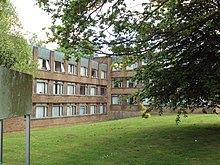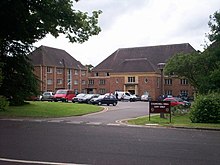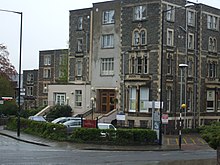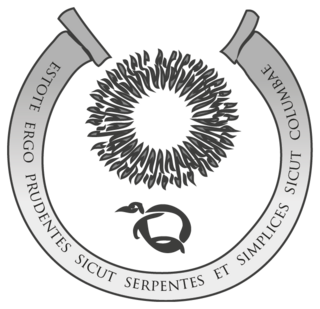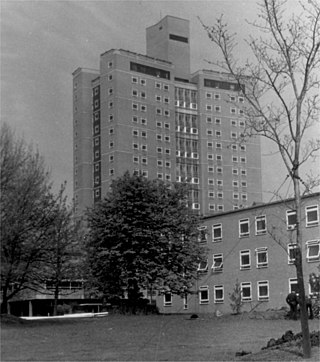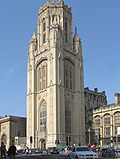Clifton halls
Goldney Hall

Goldney Hall is a self-catered hall situated in Clifton. [1] The Hall has gardens and follies which include an ornamental canal, gothic tower, [2] rotunda, [3] mock Bastion and a subterranean shell-lined grotto. [4] The Hall takes its name from the Goldney family who were a family of wealthy Clifton merchants. Goldney Hall is a popular location for filming with The Chronicles of Narnia , The House of Eliott and Truly, Madly, Deeply as well as the 2002 Christmas episode of Only Fools and Horses , [5] Casualty and Skins being filmed there. [6] Its latest appearance is in the BBC series Sherlock, as the venue for the wedding of John Watson and Mary Morstan in the second episode of the third season, The Sign of Three .
Clifton Hill House
Clifton Hill House is a catered hall in Clifton. [7] It is a grade I listed building. [8]
Manor Hall
Manor Hall comprises a number of annexes, each of which is less than a one minute's walk from the main building. [9] The main hall was erected between 1927 and 1932 [10] as a women's hall of residence in the grounds of its present annex Manor House, from which the Hall takes its name. [10]
The main building houses around 150 students, with music room, library, common room, bar, and computer room, all of which are accessible to all of the hall's residents. The hall owes its existence to the generosity of the Wills family, and was designed by the architect Sir George Oatley, who also designed the Wills Memorial Building, and Wills Hall, both of which belong to the university.
This annexe came to the university in 1919, again through the generosity of the Wills family, although it has its roots in the early 18th century. Over the years it has gone through many changes. In the 19th century it was successively the home of two notable scientists, Dr William Budd, F.R.S., who discovered the origins of typhoid, and Professor John Beddoes, F.R.S., a social anthropologist who wrote The Races of Man. Manor House was extensively refurbished by the university in the summers of 1997 and 1998, and officially reopened in April 1999.

Richmond House is one of the oldest houses in Clifton, being built between 1701 and 1703. This building has an extensive history; it used to be a boarding school for boys, as well as being the home of the Revd Mr Smith and his large family of maiden daughters, one of whom became one of the first ladies on the city council in Bristol (1920), and one of the first female J.P.s. The building is an English Heritage Grade II listed building. [11]
2, 3 and 4 Tottenham Place are houses which were built in the 1830s. The houses were named after a local resident, Ponsonby Tottenham, a relative of the then Marquess of Ely. They came into the university's possession in the 1940s and 1950s.
Sinclair House is the most modern addition to Manor Hall's annexes, built partly on the site of Holland Cottage, destroyed during the extensive German air raids of November 1940. The house was opened in 1978 and named after the Rt. Hon. The Lady Sinclair of Cleeve.
